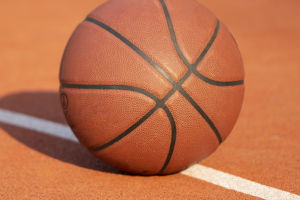Free diving is an exhilarating water sport that involves diving as deep as possible without the use of an air bottle. Instead, free divers rely on adjusting their breath and holding it through their own vital capacity.
While it offers a thrilling experience, free diving also poses certain risks, necessitating professional first-aid knowledge for practitioners and their diving partners.
Due to these dangers and the scarcity of suitable dive sites, the sport remained relatively obscure until the 1970s.
However, recent years have witnessed a surge in the popularity of free diving, with the establishment of the World Free Diving Association (AIDA) and annual free diving competitions.
Although not a novel sport, free diving has captured the attention of adventure enthusiasts worldwide.
Unlike other water activities, free diving is predominantly a competitive sport encompassing various disciplines, all centered around a common principle: staying underwater for as long as possible on a single breath.
These disciplines range from static apnea, where divers lie stationary, face-down in a pool while holding their breath, to those involving covering horizontal or vertical distances.
When engaging in free diving, practitioners typically wear masks that combine the features of a dive mask and swim goggles.
Notably, snorkels are not used in free diving. Exposure protection is also essential, usually in the form of wetsuits. Drysuits are rarely seen in free diving.
Some free divers opt to wear fins, although certain disciplines do not require them. These fins are often long, full-foot fins or a monofin—a single, broad-bladed fin worn on both feet, resembling a fish tail.
Free divers prioritize their dives, spending minimal time at the surface, except for surface intervals and recuperation.
Scuba diving, on the other hand, involves the use of a self-contained underwater breathing apparatus (SCUBA) to explore the depths of the water.
Divers carry compressed air bottles—commonly mistaken for oxygen bottles—and rely on scuba devices to breathe underwater.
A comprehensive set of scuba diving equipment includes masks, snorkels, fins, regulators, diving instruments, gas cylinders, buoyancy adjustment vests, and diving suits.
When venturing into open water, divers may also carry auxiliary equipment such as diving knives, underwater flashlights, and even spearguns.
Scuba diving encompasses two breathing systems: open-circuit and closed-circuit.
The open-circuit system, currently the most widely used, involves using a regulator device to convert the compressed gas in the cylinder into breathable pressure, supplying breathing gas to the diver for a single use and then exhausting it.
The closed-circuit system, known as a rebreather, provides a recyclable air supply.
After the diver consumes the air, the system absorbs carbon dioxide and replenishes appropriate oxygen, which is then supplied back to the diver.
These systems can provide compressed air, Nitrox, or gas mixtures, allowing divers to target different dive times and depths to avoid decompression sickness or oxygen toxicity.
Snorkeling, in contrast to free diving and scuba diving, offers a simpler and more accessible experience. It is a popular leisure activity often enjoyed in tropical resorts and scuba diving areas.
Snorkeling requires minimal training and certification, making it suitable for individuals with limited experience.
During snorkeling, participants remain on the water's surface, observing the underwater landscape by looking down through a mask while breathing through a snorkel.
This eliminates the need to lift the head for breathing. While exposure protection, such as a rash guard or wetsuit, may be worn, some locations may necessitate a dry suit.
Snorkeling fins are softer compared to scuba fins and easily slip over the full foot without the need for a boot.
For weaker swimmers, floatation vests are sometimes worn to provide additional buoyancy and enhance safety.
Free diving, scuba diving, and snorkeling offer distinct experiences for water enthusiasts. Free diving tests the limits of breath-holding and involves competitive disciplines.
Scuba diving allows for exploration at greater depths using specialized equipment. Snorkeling provides a simpler and more accessible option for observing underwater scenery from the surface.
Each activity offers its own unique adventure and enjoyment, catering to different preferences and levels of expertise in the water.


